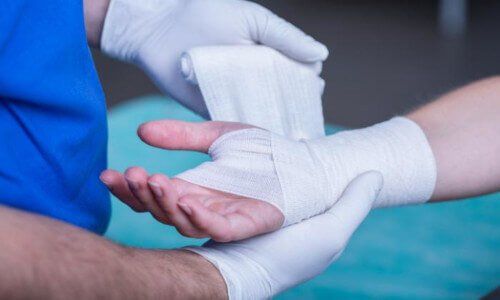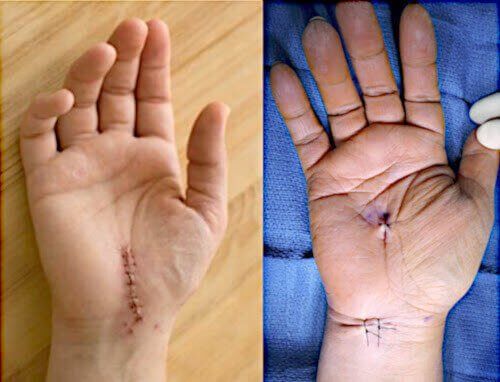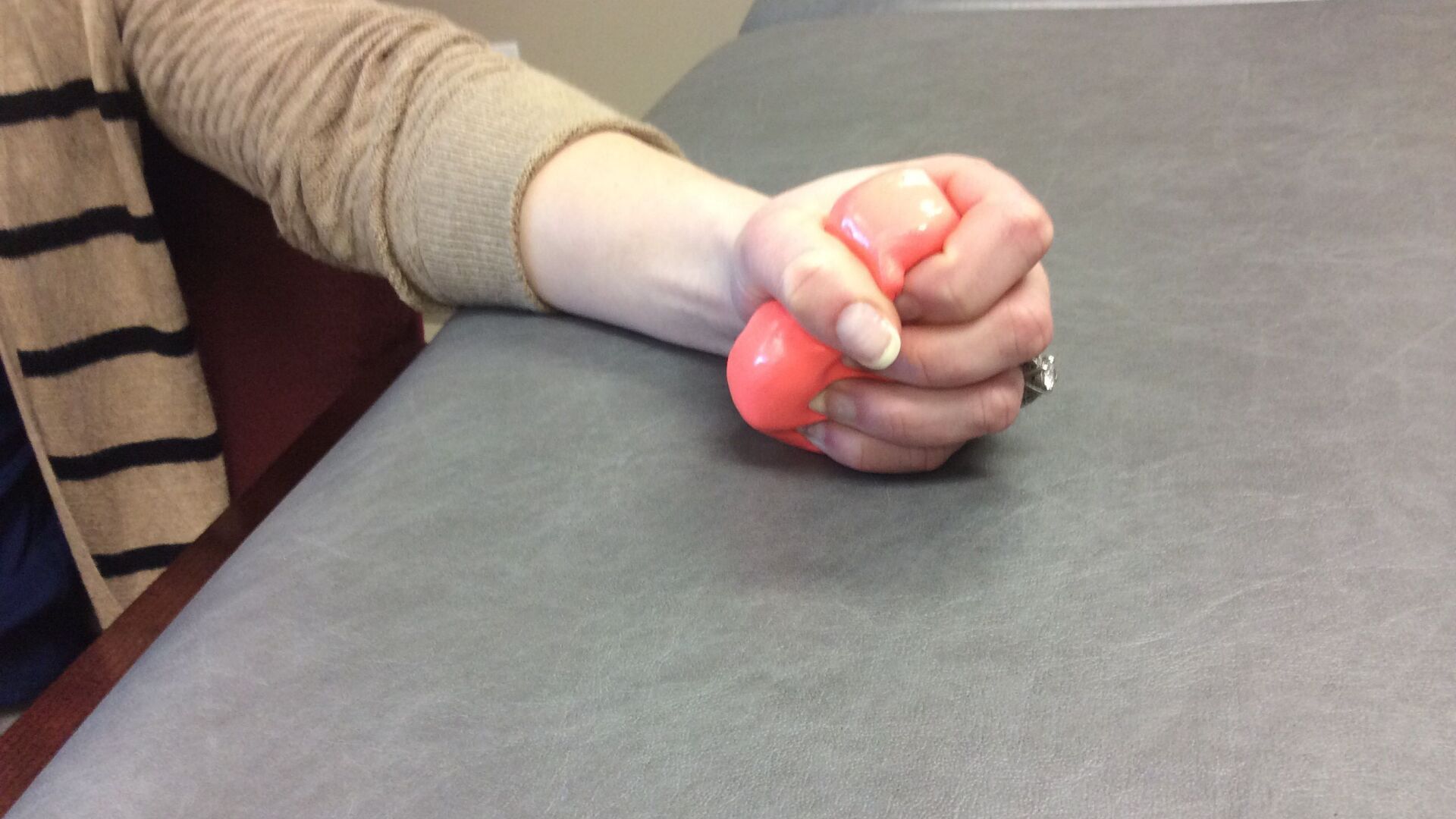What's Carpal Surgery Recovery Like?
For most people, their carpal surgery recovery time will last a couple weeks to a couple months. For others, it may last up to a year or more. (But that's unusual.)
Unfortunately, it's not easy to predict how long you'll be back to normal again. The same goes for what kind of post-surgical
pain you might experience. But certain individual "predictors" can give you an idea of what to expect and what your recovery will be like. Of course, if you have specific
questions about the procedure or your recovery, you should always ask your doctor.
About the surgery
First, I congratulate you on being your own advocate and learning as much as you can about the carpal tunnel surgery, recovery, and timeline. The facts are straightforward, and I'm honored to help you put it all together.
Many doctors advise patients who have
carpal tunnel syndrome to undergo surgery. The aim of the surgery is to cut a ligament (transverse carpal ligament) deep inside your wrist joint.
Cutting this ligament lets your wrist bones snap apart. This then creates more space between the wrist bones.
In theory, cutting the ligament and spreading the wrist bones should decompress the crushed median nerve below. And when the nerve decompresses, it should relieve the
symptoms of carpal tunnel syndrome. These include problems in your hand or fingers like:
- excruciating pain
- crushing numbness
- relentless tingling
- deep burning
- worsening weakness
Your doctor will decide whether you have
endoscopic carpal tunnel release surgery or
open carpal tunnel release surgery (see below for details). Either procedure is relatively short. Usually it's less than 45 minutes long, assuming there are no
complications.
However your particular carpal surgery recovery
time can take longer. It depends on several variables, also discussed below.
Carpal surgery recovery depends mostly on you
After the operation, you will undergo hand rehabilitation and therapy. You should discuss your carpal surgery recovery and
aftercare with the surgeon. Do this
well before you settle on the date of the operation. You don't want any surprises
right after
the surgery.
The primary factor affecting your recovery is which surgery type your doctor will want to perform. There are 2 basic types of carpal tunnel surgery:
• Open carpal tunnel release surgery
Open release surgery requires a 2-3 inch long incision in your palm. This causes more trauma and post-surgical pain because of the relatively large incision. It also
takes longer to recover. But this is also safer because a larger incision means the surgeon can see all of the structures clearly. There's less chance to accidentally cut or nick a vital structure like a nerve or blood vessel.
• Endoscopic carpal tunnel release surgery
Endoscopic surgery requires one or two small holes in the hand. The procedure is performed with an
endoscope inserted into one of the holes. This produces much less hand trauma. Consequently, there's much less post-surgical pain and
faster recovery time. But an endoscope doesn't afford the wide field of view as with the open technique. As a result, there's a greater possibility the surgeon can accidentally lacerate a vital structure.
With either technique, the doctor's goal is to slice the transverse carpal ligament in half. When the ligament is cut, your wrist bones snap apart. This provides more room inside the wrist joint, giving your compressed median nerve some "breathing room". But the procedure also causes your hand to
weaken
because the bones lose some stability.
As a result, you need to strengthen your hand afterwards. Restoring hand strength and function depends mostly on
how well you heal and
how dedicated you are to your physical therapy and rehabilitation program.
In short, your speed of recovery depends on a few factors:
- Which surgery you had
- Your particular body's healing speed
- How dedicated you are to hand therapy
- If you have any existing comorbidities (preexisting chronic illnesses)
In the carpal surgery recovery room
When the operation is over the doctor finishes applying the stitches and bandages to your hand. Then you're transferred to the carpal surgery
recovery room. There you will likely see many other patients coming out of hand surgery, too.
For efficiency, surgeons usually "stack" surgical patients in the morning, one right after the other. This might make you feel like you're part of a "surgery mill". But the attentive staff will surely not ignore you.
A doctor or recovery nurse specialist will help you with any problems you have. In particular, they will monitor you for:
- excessive pain
- difficulty breathing
- unusual bleeding
- chills or shivering
- nausea or vomiting
If you had
general anesthesia you may shiver in the recovery room. The doctor or nurse will give you medicine that can stop the trembling. They'll also apply a warm blanket that will make you feel a lot better.
Most people who have general anesthesia will feel nausea inside the recovery room. This is a result of the anesthetic and is perfectly normal. It will also subside on its own.
The staff will also give you pain medicines to dull the discomfort because (whichever surgery you had)
your hand will definitely start to hurt.
Patients remain in the recovery room until the surgeon determines they're well enough to go home. Of course, if you feel abnormal you should tell the doctor or nurse.
From the time you enter the carpal surgery recovery room to when you leave generally takes
3-4 hours. This mainly depends on whether you had local (regional) or general anesthesia, and which kind of anesthesia you had.
Going home after surgery
Recovery right after discharge
Upon discharge from the surgical center or hospital, you will get several paper
instructions on how to take care of the surgical wound at home.
Be sure to follow those instructions!
Carpal surgery recovery & rehabilitation
Rehabilitation of the hand should start within a week of the surgery to keep
adhesions from forming. The first steps will be to move your fingers. But the doctor will give you more detailed instructions for full hand rehabilitation.
Most patients enter a
rehabilitation program with a therapist. Studies show these patients get the
best
long-term recovery results.
After about two weeks you will have a
follow-up visit with the surgeon. This is when the stitches come out. Most patients are given a wrist brace to wear all the time. The brace stays on for another 3-4 weeks during the recovery period.
You will also get instructions to perform more complex exercises and increasingly vigorous activities. You should work up to more intense hand activities gradually over the next 1-2 months.
Possible surgical complications
Complications can greatly lengthen your carpal surgery recovery period. The
most common surgical and post-surgical complications include:
- excessive tissue damage
- unusual pain
- infection at the scar
- excessive bleeding
- excessive scarring or adhesions
- nerve damage
- stiffness or loss of function
- return of symptoms
When these occur, they can indefinitely extend the recovery period until the problem resolves. Some patients can go a year or longer until all such problems resolve.
Conclusion
Your carpal surgery recovery period may take several months. In some people, especially when complications occur, it can take a year or more. Follow your doctor’s advice to minimize pain and ensure good recovery.







